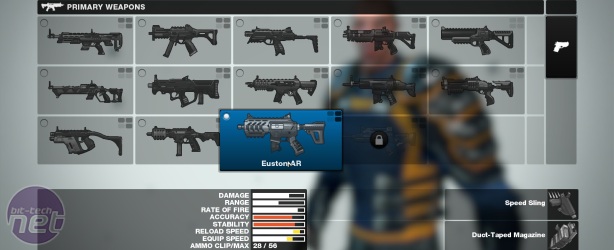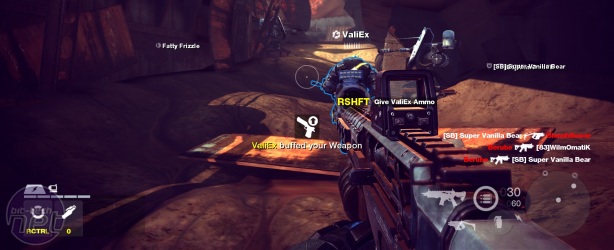
Brink PC review
One of Brink's features that Bethesda has been keen to push is the apparent integration of the offline and online modes of play. In reality, though, all this means is that you can play the campaign mode - which at best is a short string of tenuously-linked team missions, and at worse is just the multiplayer mode rebadged - either online with human team mates, or offline with bots as team mates. This is hardly the seamless integration that Bethesda promised, but it's not worth getting hung up on this. You would have to be a masochist to play Brink in anything other than the online mode anyway, as the AI is so poor. The only reason to play Brink as a singleplayer game is as an introduction to online play.That’s not a deal breaker, though, as playing online against human opponents is what Brink does best. The game’s innovative and much talked about SMART movement system, which enables parkour-like sliding, vaulting and climbing, makes combat a fluid, fast-moving affair and opens up interesting routes to and from objectives. We won’t deny that it takes a little getting used to, though; we forgot to use it for the first few hours of play, and its implementation isn’t always perfect. Once familiarise yourself with it, though, SMART helps to make Brink genuinely fun.
Visually, Brink is a mixed bag. We had high hopes that the PC version would look better than the PS3 version we’ve seen before, and while it largely looks superior, the low res textures still rear their ugly, pixelated heads more often than you'd like. The level design is often overly fussy too which, when coupled with the mass of floating objective markers, player names and HUD elements, makes the screen cluttered and confusing at times. Again, experience helps here, and we grew more comfortable with the mass of on-screen information as time went on. Brink could do with taking a leaf out of TF2’s book, though, by simplifying the level design and art to make up for the mass of other action on screen.
As with most online shooters, there are different classes available to play. Interestingly, Brink also attempts to force players to play them all, by making certain objectives class specific - you need a soldier to blow up a bridge, for example, or an operative to hack a safe. It’s only these abilities that differentiate the classes, though, as each has access to the same weapons and the same base health. As a result, in the early portion of the game it sometimes doesn’t feel as if much has changed when you change from one class to another. However, the classes become more distinct and powerful as you advance and gain abilities; the agent in particular goes from possibly the weakest class to one of the strongest.

There is a large array of weapons from which to choose, although there isn't much of a difference between weapons in the same class
Being able to use any weapon as any class does have some advantages, though, as it prompts players to be less stubborn about changing class when it’s needed; no matter which class they're playing, they can still use their favoured weapons. Whether you’ll have a favourite weapon is questionable, however, as there isn’t a great amount of variation among them - one SMG is very much the same as the next. It’s also frustrating that you can’t change the mods you’ve put on your weapons (or your character's body size for that matter) without exiting to the main menu.
Brink definitely isn’t without its issues. It can feel makeshift in places, and at times it certainly doesn’t make itself easy to love. There are rewards for those who persevere with the game, though, as it becomes a lot of fun once you get to know the levels and unlock some of the later abilities and, with the right mix of people on a server, highly tactical. As a result, the game really represents a missed opportunity for Bethesda. With a little more polishing and thought the game could have been great, rather than merely good.
-
Overall70 / 100


MSI MPG Velox 100R Chassis Review
October 14 2021 | 15:04










Want to comment? Please log in.